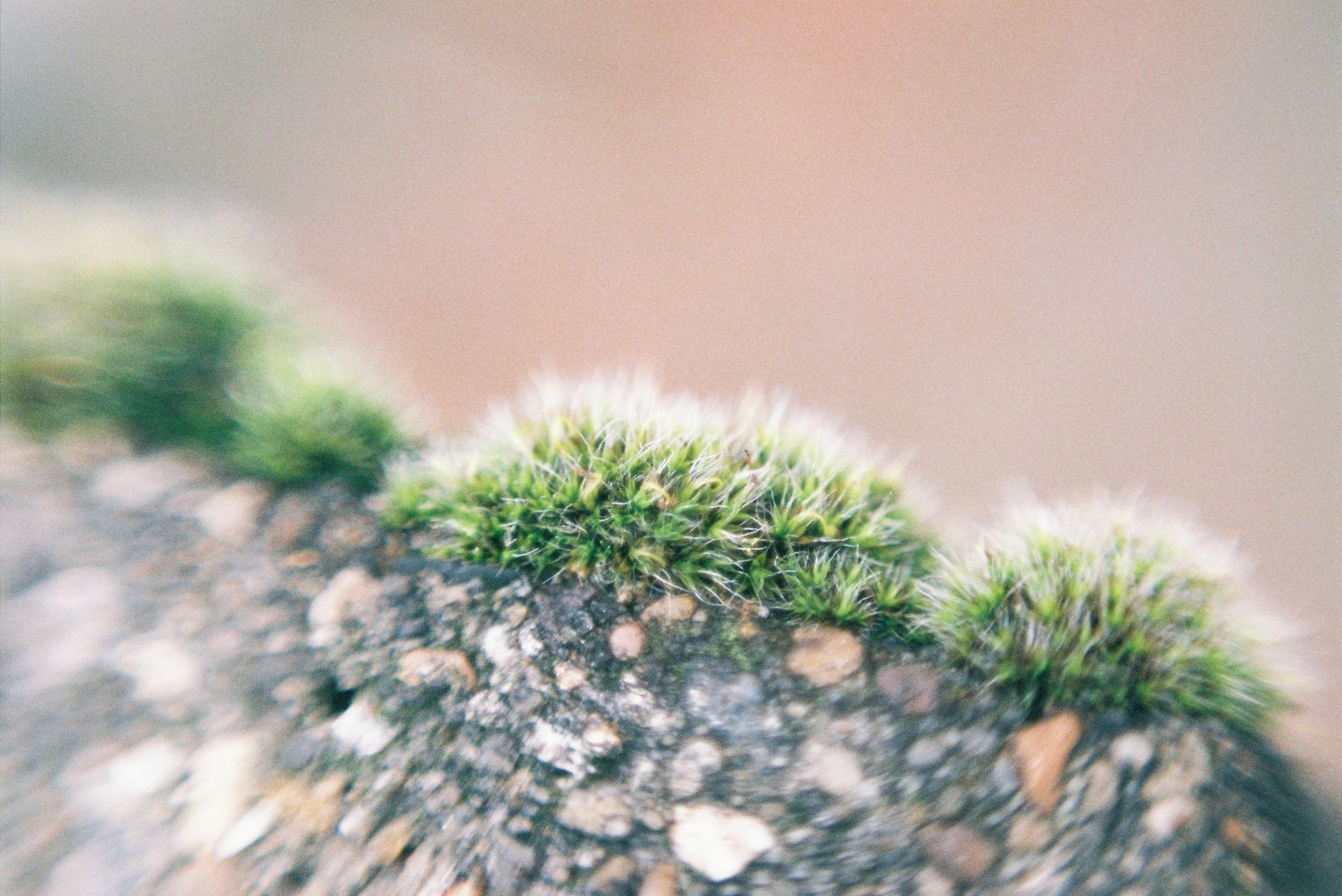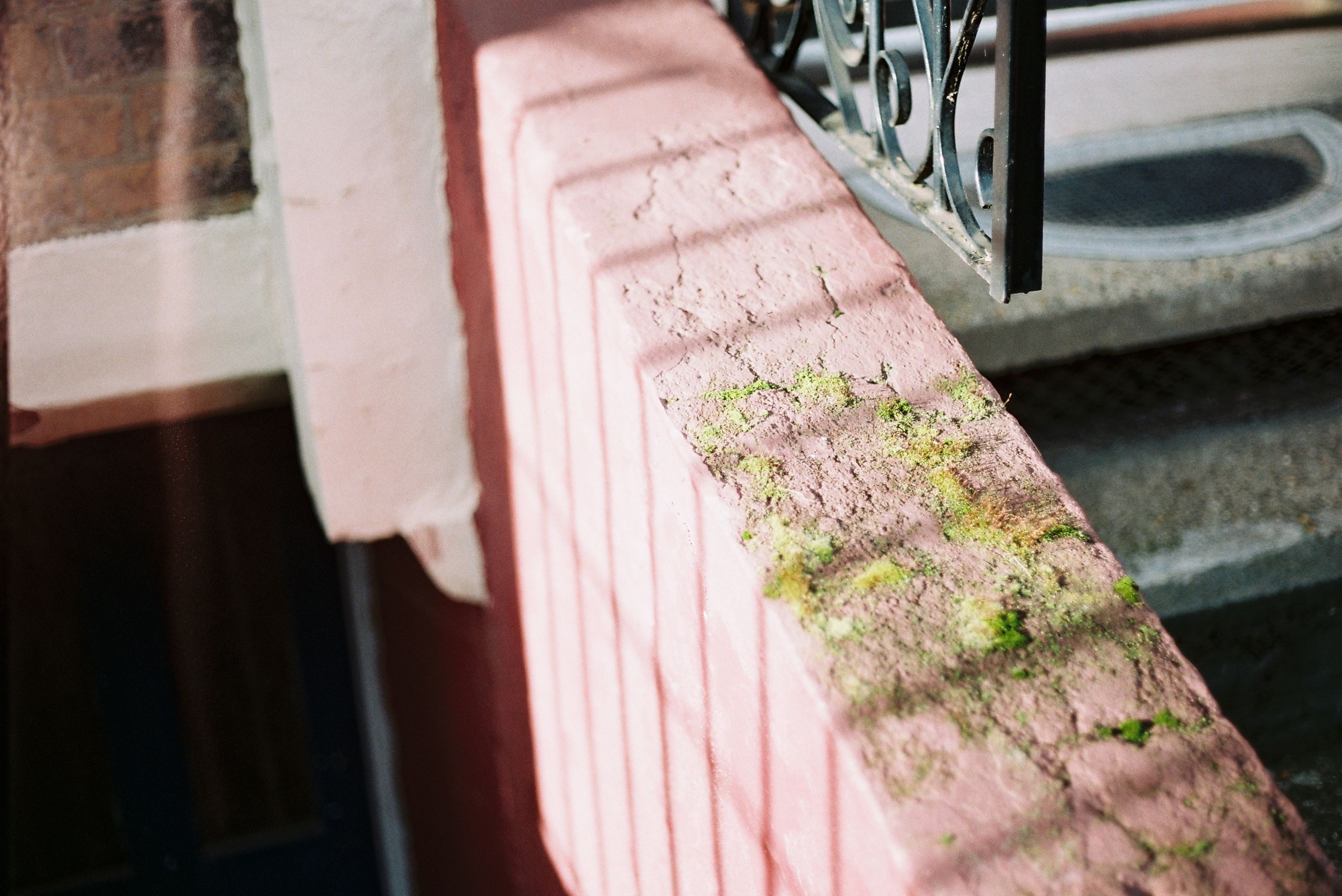Over the spring and summer months of 2021, the small, paved front yard adjoining our house to the street was ‘invaded’ by tall ‘weed-like’ plants. Eventually, I removed the ‘weeds’, cutting them down and ripping out their roots.
Over the next few weeks, I noticed that the crevices and cracks left where the plants had anchored their roots were slowly filling with a burgeoning growth of moss. I reasoned that it may have been that the removal of the weeds directly laid the foundation for the arrival of the moss as it filled the spaces they left over; it was nurtured by the detritus and decomposing matter they left behind. At first the moss appeared patchily but soon started to spread. Soon, the moss was all over the yard, on the brick walls enclosing the yard and on the stairs leading to the front door and down to the basement. It was unfurling with no kind of consideration for the intended functions of these spaces, just finding the most comfortable, conducive, damp, environments it could. I noticed moss in each stage of its typical lifecycle: sparse and young gametophytes emerging from rhizoids, dense convex and well-formed sponge-like mats, to protruding stalks containing bud-like formations at their tip; primed for dissemination.
I originally removed the weeds from the yard because I had the time to do so; I had time to do so because I was temporarily working from home; I was temporarily working from home because of restrictions on movement and the closure of the university where I work due to the coronavirus pandemic. Removing the weeds, or at least having the time to do so, was pleasurable in a sense—finding time for gardening, keeping up the appearance of the house—but what was genuinely and unexpectedly pleasurable was watching the moss grow in its wake. Getting close to it, watching its transformations and unfurling. The moss formed and grew in unanticipated and unintended locations, and, in this sense, became a metaphor for the very pleasure it invoked. The unintended and unanticipated reorganization of spaces effected by local (and global) transmission patterns, and the restrictions imposed on top of these patterns, squeezed pleasure from its usual sites and contingently relocated it in other, less predictable locations, like my front yard. Pleasure filled the cracks and holes of daily routines, as the moss did, too, in the routine arrangement of paving slabs and brick walls of the front yard.
Ultimately, the front yard stopped being a mere conduit and liminal space through which I passed on the way to work. This once porous boundary between the ‘private’ and the ‘public’ realms became a space for dwelling and pleasure, a site in which I could slow down, notice, and be affected by myriad actors, not least moss. This photographic essay is intended to convey a sense of the closeness and intimacy I felt to moss that unexpectedly emerged in my front yard during the first wave of the coronavirus pandemic in London, England. I had been spending more time at home due to the closure of the university where I work, and this gave me the opportunity to dwell in a place that usually functions primarily as a conduit for passage to other destinations. The photographs detail the various scales of the moss growth, and emphasize the passage through different stages of its lifecycle, all of which appeared over the course of a couple of months. The apparent obliviousness of the moss—and my proximity with it—to the churnings of the coronavirus pandemic, with its global spatiality and temporal indeterminacy, offered a sense of unexpected pleasure and hope.



















Aaron Bradshaw is a postdoctoral researcher working on the cellular mechanisms of neurodegeneration at University College London. His other research focuses on the relationships and dialogues between the natural sciences and the social sciences and humanities, with a particular focus on microbial life.